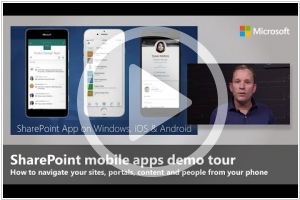SharePoint vs Smartsheet
August 10, 2023 | Author: Michael Stromann
59

SharePoint's multi-purpose platform allows for managing and provisioning of intranet portals, extranets and websites, document management and file management, collaboration spaces, social networking tools, enterprise search, business intelligence tooling, process/information integration, and third-party developed solutions. SharePoint can also be used as a web application development platform.
28
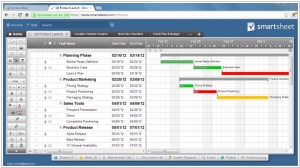
Smartsheet is an online project management and crowdsourcing tool. It allows owners of information to comprehensively involve contributors through authenticated access, publicly-accessible published sheets, or via embeddable survey forms. Functionality is focused on the ability to organize, share, and update tasks and files.
SharePoint and Smartsheet are both popular collaboration and project management platforms, but they have distinct differences in their features and focus. SharePoint, developed by Microsoft, is a robust document management and collaboration platform that allows teams to store, organize, and share files and information within a centralized environment. It offers features like document libraries, team sites, version control, and workflow automation. SharePoint is highly customizable and integrates well with other Microsoft products and services. On the other hand, Smartsheet is a cloud-based project management tool that provides features such as task tracking, Gantt charts, collaboration, and automation capabilities. Smartsheet focuses on ease of use, flexibility, and team collaboration, making it suitable for managing projects, tracking tasks, and sharing project-related information.
See also: Top 10 Enterprise Portals
See also: Top 10 Enterprise Portals
SharePoint vs Smartsheet in our news:
2019. Smartsheet acquires Slope to help creatives collaborate
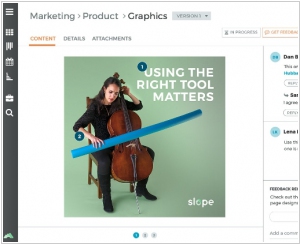
Smartsheet, the renowned project management and collaboration tool, has recently completed the acquisition of Slope, a collaboration tool specifically designed for sharing creative assets. This integration of Slope into the Smartsheet platform empowers users to seamlessly share assets such as videos and photos directly within the application. Moreover, it introduces the functionality to annotate, comment on, or approve these assets. Smartsheet envisions this native integration from a broad enterprise perspective. It facilitates various scenarios, including HR teams sharing training videos, marketing departments exchanging product photos, or construction company employees inspecting a site and collaboratively addressing code violations by sharing annotated photos to highlight the issues at hand.
2018. SharePoint gets organization-wide news and content targeting
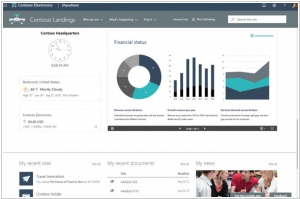
Microsoft has recently announced several enhancements for SharePoint and Office 365 sites, bringing new capabilities and functionalities. Among the notable updates is the introduction of a designated communication site that serves as the official news portal for the organization. This allows news posted on the portal to be easily identified with a special indicator, ensuring clear visibility on both mobile devices and the SharePoint home page. Additionally, a new feature enables the targeting of content to specific audiences based on their Active Directory (AD) Group membership, including dynamic groups. Moreover, SharePoint sites now have the ability to create mega-menus for navigation, facilitating improved user experiences and seamless site exploration. These advancements aim to enhance communication, personalization, and navigation within SharePoint and Office 365 sites.
2018. Smartsheet got $1.9 billion valuation after IPO
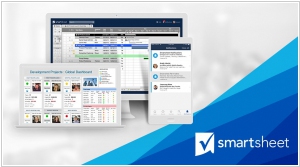
Upon its debut in the public markets, online project management and crowdsourcing company Smartsheet witnessed a surge in its share prices. Smartsheet concluded at $19.50, representing a 30 percent increase from its initial price of $15, resulting in a market capitalization of $1.9 billion. Although the company recorded net losses in its financial statements, it exhibited robust revenue growth. In its IPO filings, Smartsheet disclosed a substantial user base of 3.6 million, including notable business clients such as Cisco and Starbucks. For the fiscal year 2018, the company generated $111.3 million in revenue. However, similar to many Software-as-a-Service (SaaS) companies, Smartsheet is going public while reporting a loss.
2017. SharePoint 2016 finally added SharePoint Framework Support
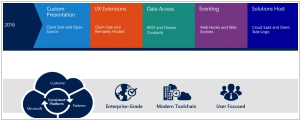
Microsoft's objective in launching SharePoint Framework into general availability in February was to attract a wider pool of developers to the SharePoint ecosystem. Now, with the introduction of SharePoint Feature Pack 2 (FP2), the company extends Framework support to users of SharePoint 2016. Framework serves as a page and web part model, offering comprehensive assistance for client-side SharePoint development, seamless integration with SharePoint data, and compatibility with open source tools. This release simplifies the process for SharePoint 2016 users and third-party developers to construct solutions centered around SharePoint.
2017. Collaboration service Smartsheet gets $52M
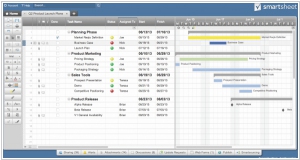
The spreadsheet software service, Smartsheet, has recently secured $52 million in funding. With approximately 70,000 businesses currently subscribed to its product, ranging from small and medium-sized businesses to large enterprises, Smartsheet has amassed around 550,000 licensed customers. Additionally, there are "a few million" individuals who utilize the service free of charge. Since its establishment in 2006, Smartsheet has positioned itself as an early entrant in the market, offering an alternative to Google Docs, Excel, and other spreadsheet applications. Its distinctive focus lies in facilitating collaboration among multiple users within these documents, allowing for dynamic utilization and efficient teamwork.
2017. SharePoint Framework is generally available

Microsoft has introduced the SharePoint Framework, empowering developers and administrators to construct and deploy components that are utilized by Office 365 users within their production environments. This advancement entails leveraging web technologies to create agile, responsive, and notably mobile-friendly applications on SharePoint. While SharePoint has served as an application and development platform for a considerable duration, the release of the Framework marks a significant stride in enhancing the developer experience. Historically described as unwieldy and challenging, the SharePoint Framework introduces improvements that address these concerns.
2016. Microsoft connects SharePoint Team Sites to Office 365 Groups
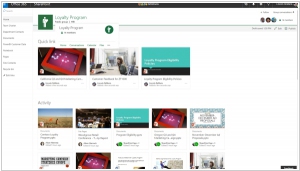
Microsoft is rolling out the integration of SharePoint and Office 365 team sites, introducing a new feature that enables the creation of interconnected SharePoint Online team sites within seconds. This integration simplifies the process as follows: Whenever an Office 365 Group is created, the service automatically generates a SharePoint team site. The appearance of the site can be customized by the team site administrator and includes various elements such as pages, lists, libraries, and team news. SharePoint team sites serve as collaborative spaces where teams can effectively communicate, share documents, and collaborate on projects. They are user-friendly and facilitate the creation of dedicated sites for each project undertaken by the team. Moreover, team sites are easily accessible across multiple devices, making them suitable for mobile workers as well.
2016. Microsoft released SharePoint for Android
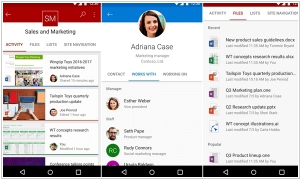
Despite Microsoft's withdrawal from actively competing in the mobile OS market for the past two years, the company has been notably sluggish in releasing Android apps. However, Microsoft has finally unveiled its SharePoint mobile client specifically designed for Android smartphones and tablets. This application offers users the ability to collaborate within team sites and access documents stored in SharePoint across various categories, including Sites, Links, and People. To utilize the SharePoint app, organizations must have an Office 365 subscription that includes SharePoint Online. Support for SharePoint Server 2013 and SharePoint 2016 will be incorporated at a later stage. Earlier this year, Microsoft released SharePoint mobile apps for iOS and Windows Phone, with the latter app still being in the preview stage.
2016. Microsoft brings SharePoint to iOS
Microsoft has introduced a new mobile application for SharePoint users, designed to provide access to a company's SharePoint-powered intranet portal and its content on smartphones and tablets. Initially available on iOS devices such as iPhones and iPads, the app will be extended to Android and Windows platforms by the end of the year, according to Microsoft. The app is compatible with both SharePoint Online in Office 365 and SharePoint Server 2013 or 2016 in on-premises or hybrid environments. It includes a Sites tab that enables users to visit their frequently accessed SharePoint sites, view recent activity, access files, lists, pages, and other content on those sites. Additionally, the app integrates with other Microsoft mobile applications, allowing seamless transitions between apps. For instance, clicking on an Office document in the SharePoint app will open the corresponding Office mobile app, while viewing a document library on a team site will redirect users to the OneDrive mobile app for iOS.
2016. SharePoint adds new document libraries
Now that SharePoint 2016 has arrived, Microsoft is gradually introducing SharePoint Document Libraries to its commercial Office 365 subscribers through SharePoint Online. These new document libraries represent a more user-friendly approach to SharePoint, allowing users to conveniently access documents, modify document metadata, and prioritize content within the document library. This development is significant as it addresses longstanding criticisms of earlier versions of SharePoint regarding usability challenges. Throughout the extensive lead-up to the release of SharePoint 2016, Microsoft pledged its commitment to enhancing the user experience.

